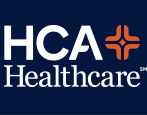Colorectal Cancer: Local Results and Significance in Hungary
Division
West Florida
Hospital
Blake Medical Center
Document Type
Manuscript
Publication Date
12-31-2024
Keywords
Colorectal cancer (CRC), Hungary, adenoma, colonoscopy, screening
Disciplines
Diagnosis | Digestive System Diseases | Internal Medicine | Medicine and Health Sciences | Neoplasms
Abstract
BACKGROUND: Colorectal cancer (CRC) causes substantial morbidity and mortality internationally. In Hungary, the incidence and mortality of CRC are among the world's highest. Fortunately, CRC is a highly preventable disease, since there is a long asymptomatic phase before neoplastic transformation. Numerous countries have instituted programs for CRC screening. However, Hungary did not implement population-based screening programs until December 2018, consisting of a voluntary 2-step screening program based on the fecal immunochemical test (FIT) and if positive, referral to colonoscopy. Asymptomatic individuals aged over 50 years were invited to participate in the 2-step program. This study aims to analyze the results of these colonoscopies and raise public awareness of the CRC disease process and prevention, especially in Hungary.
METHODS: Various literature sources were reviewed, and external information was gathered and consolidated based on CRC etiopathogenesis, management options, screening options, cost, benefits, modalities, and quality control. Semmelweis University Department of Internal Medicine and Hematology's database was accessed for the cross-sectional study results of 168 screening colonoscopies within the 2-step program from 2019 to 2020. I quantified and compared the results obtained during the colonoscopies with that of said literature within Hungary and worldwide.
RESULTS: Colonoscopy was performed in 168 patients of average age 63.4 years. The incidence of CRCs in the population was 4.76%. Among the CRC cases, 75% were in the rectosigmoid area and 25% were in the remaining colon. The total adenoma detection rate (ADR) in the study was 57.1%, higher than the recommended 25% for adequate screening colonoscopy. The total number of resected polyps was 270; 8.1% were adenomas with high-grade dysplasia and 0.76% contained CRC. Out of the 185 resected adenomas, 141 were tubular, 34 were tubulovillous, and 10 were villous. Adenoma localizations included 14.6% rectum, 38.4% sigmoid, 11.9% descending colon, 8.6% transverse colon, 17.8% ascending colon, and 8.6% cecum. The average age of CRC patients was 63.9 years (range, 56-68 years) with a slight female predominance (5 females, 3 males). The ADR of the different endoscopists did not seem to correlate with experience. Optimal participation rate of the screening program would be >60%. Population outreach through mailed FIT is evidence-based and shown to increase CRC screening rates in underserved populations.
CONCLUSIONS: Hungary would benefit immensely in most aspects from mandatory, population-based CRC screening with this 2-step program. This alternative is proposed in lieu of 1-step screening, because of the limited capacity for colonoscopy in the country and the limited participation rates in the screened population. To reach maximum cost-benefit, the participation rate of the screened population must be >60%, with >80% of FIT positive test results being referred to colonoscopy. Consolidation and distribution of the screening program through population outreach will bring about substantial reductions in mortality from CRC. Further studies are warranted on the feasibility and sustainability of this 2-step program.
Publisher or Conference
Journal of Gastrointestinal Oncology
Recommended Citation
Longobardi S. Colorectal cancer: local results and significance in Hungary. J Gastrointest Oncol. 2024;15(6):2552-2577. doi:10.21037/jgo-24-318

